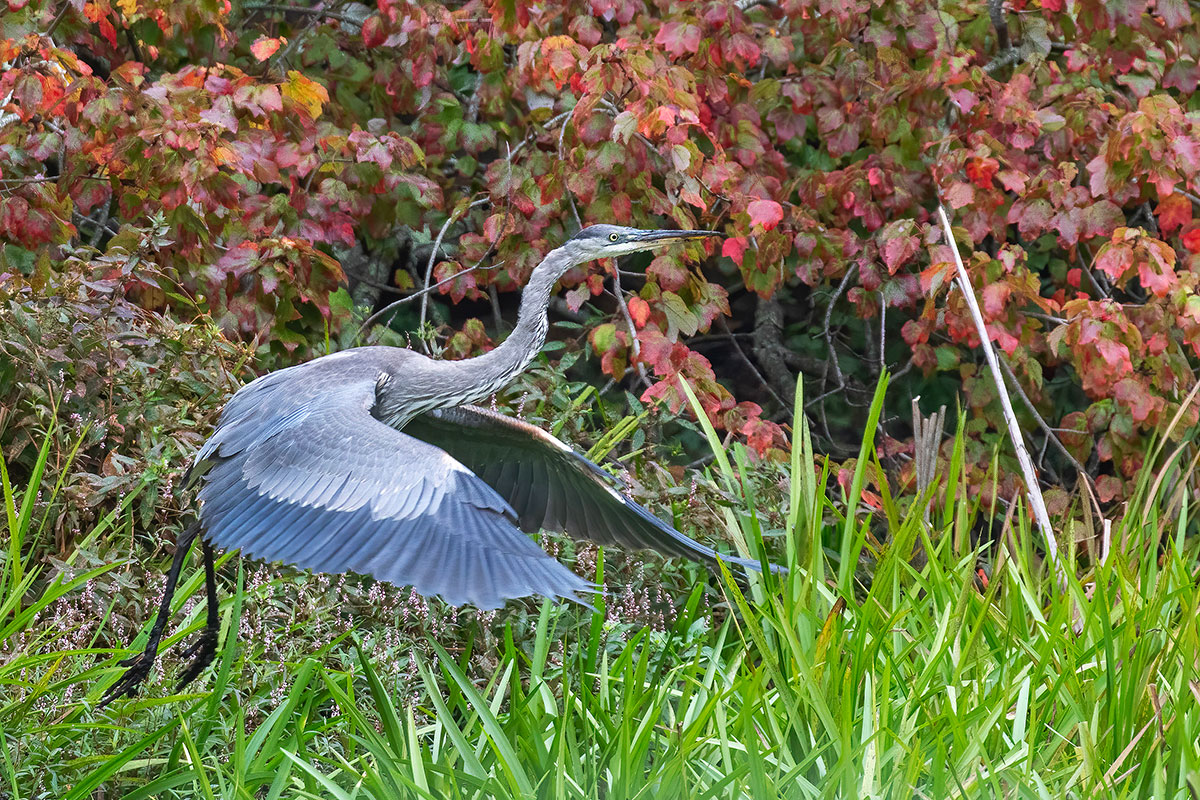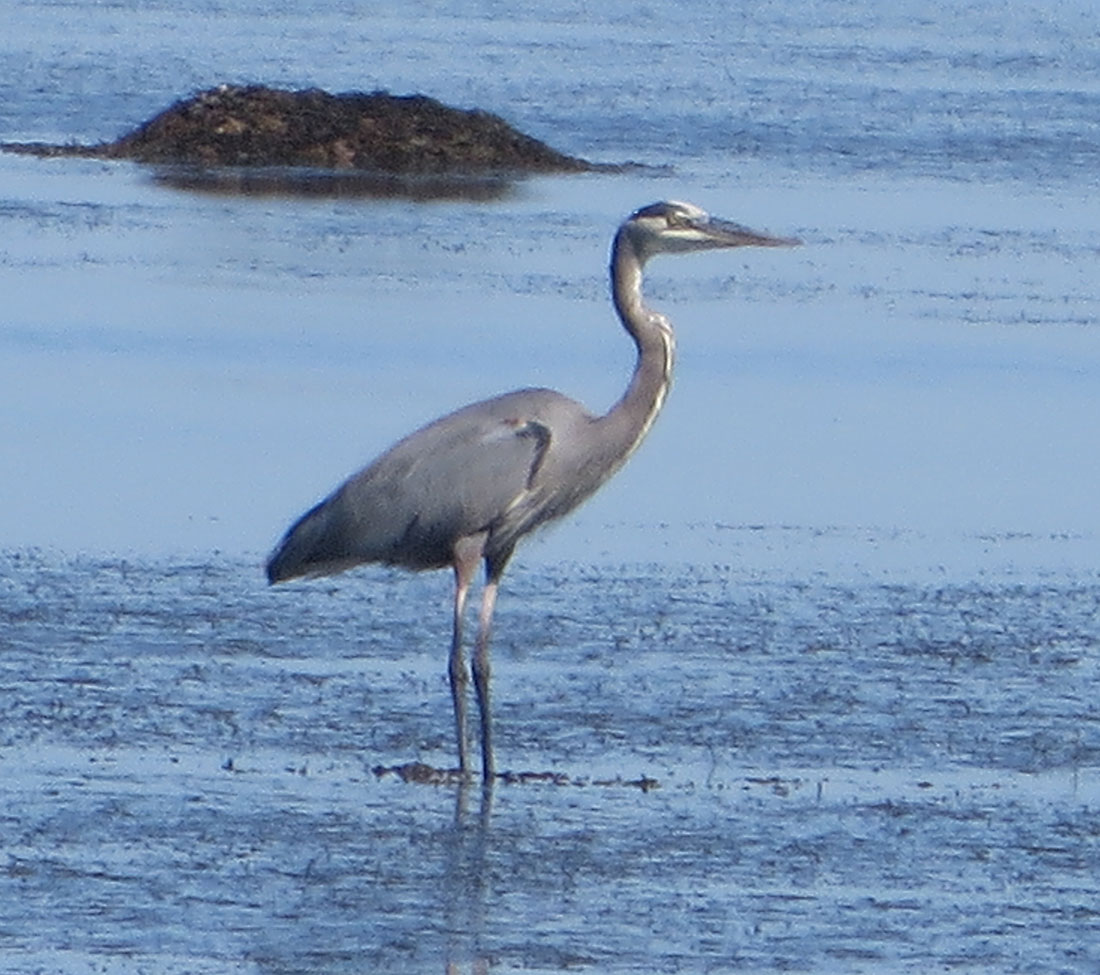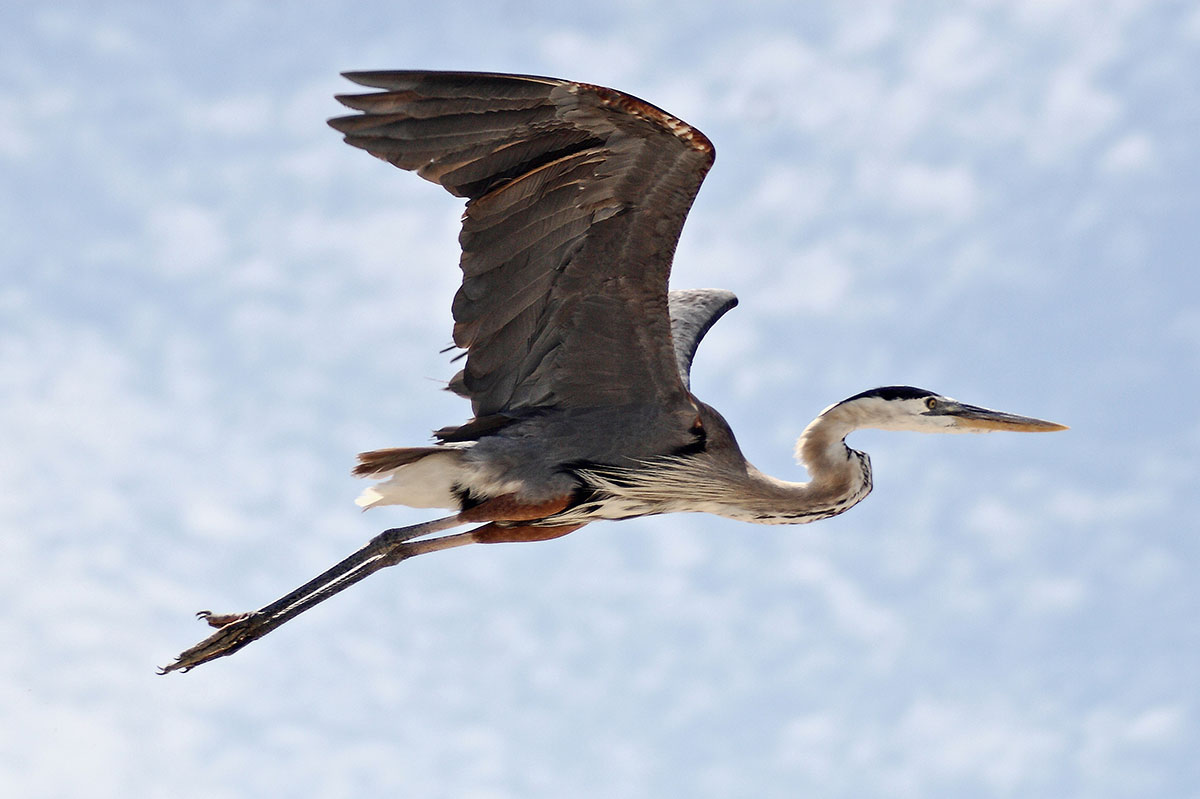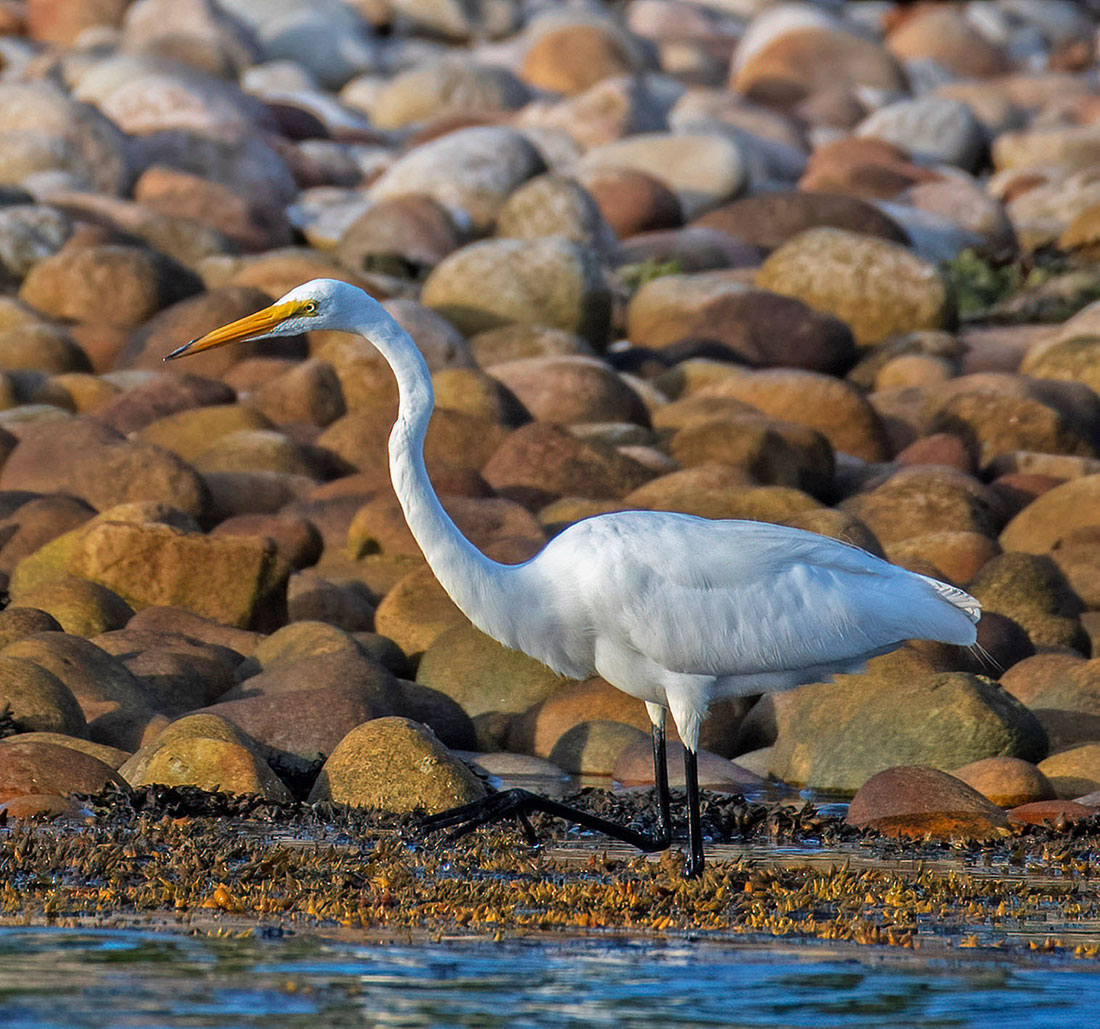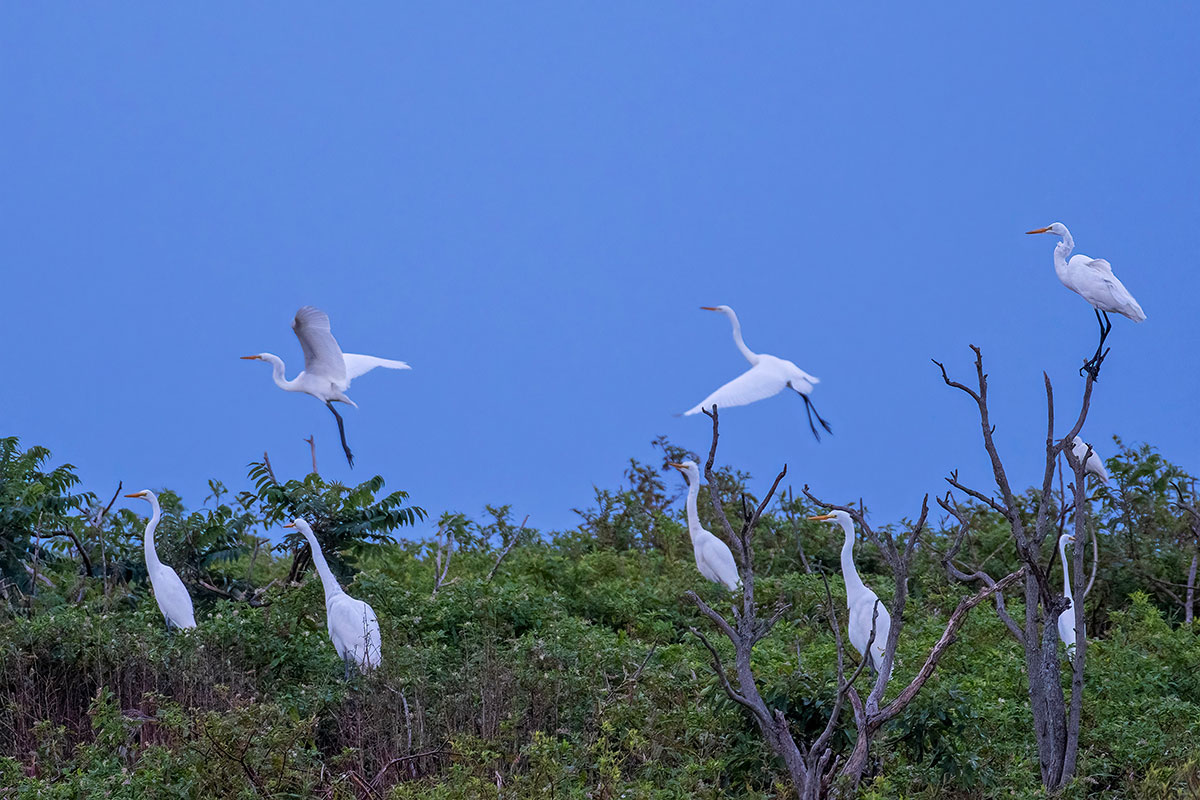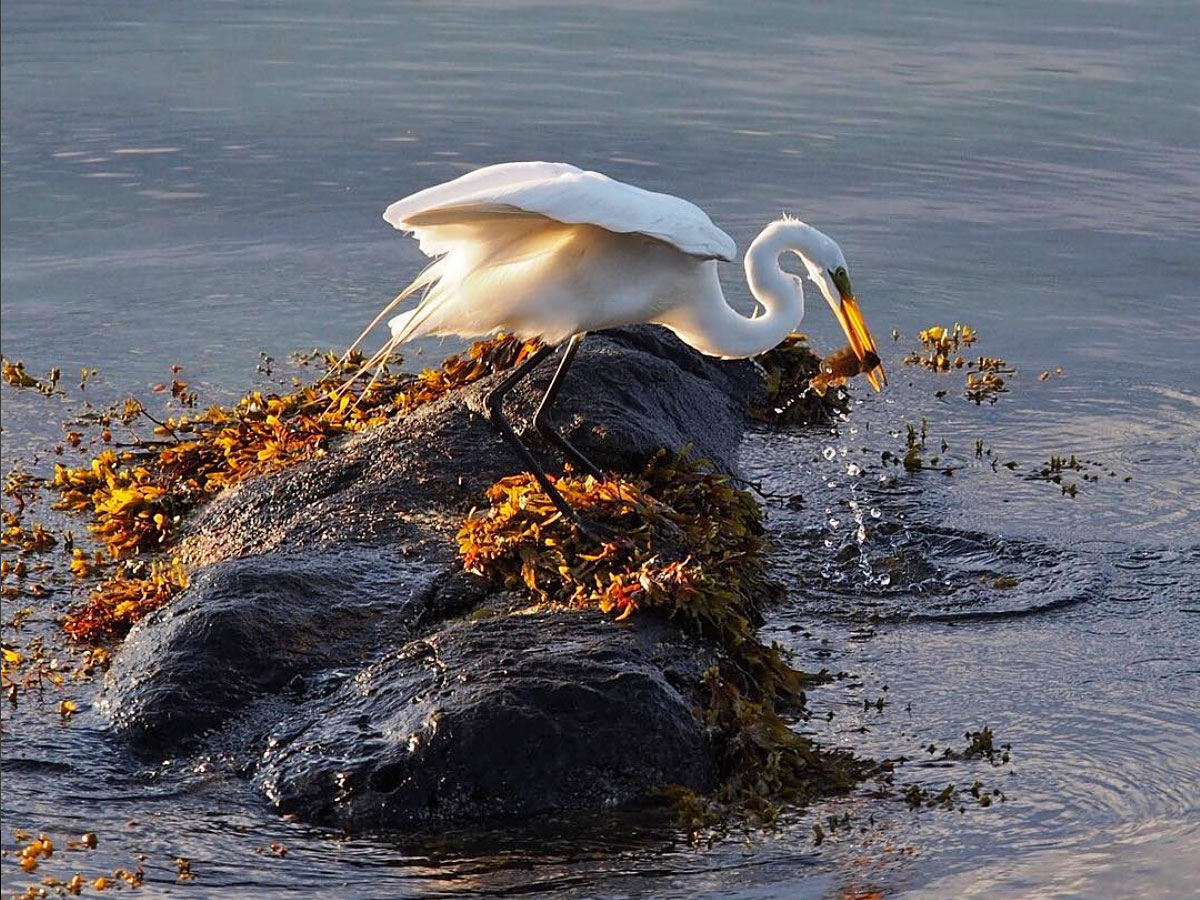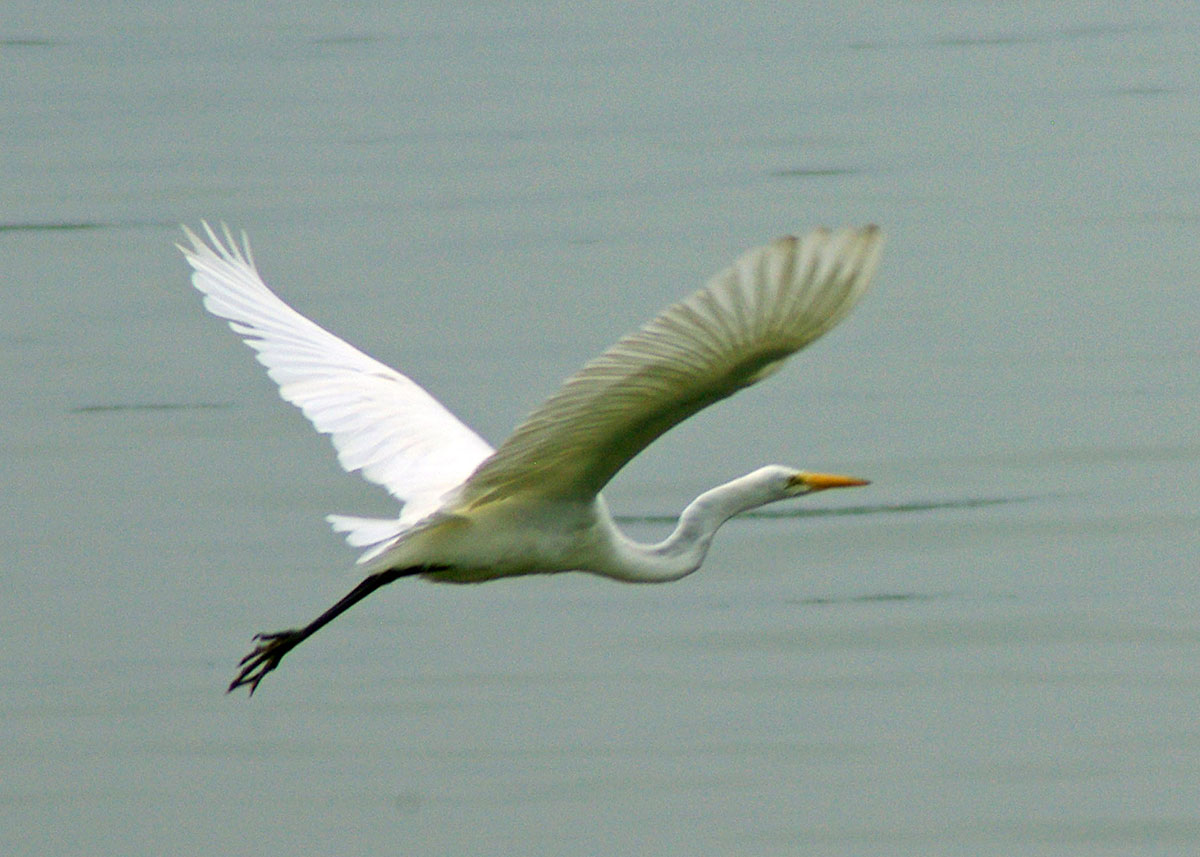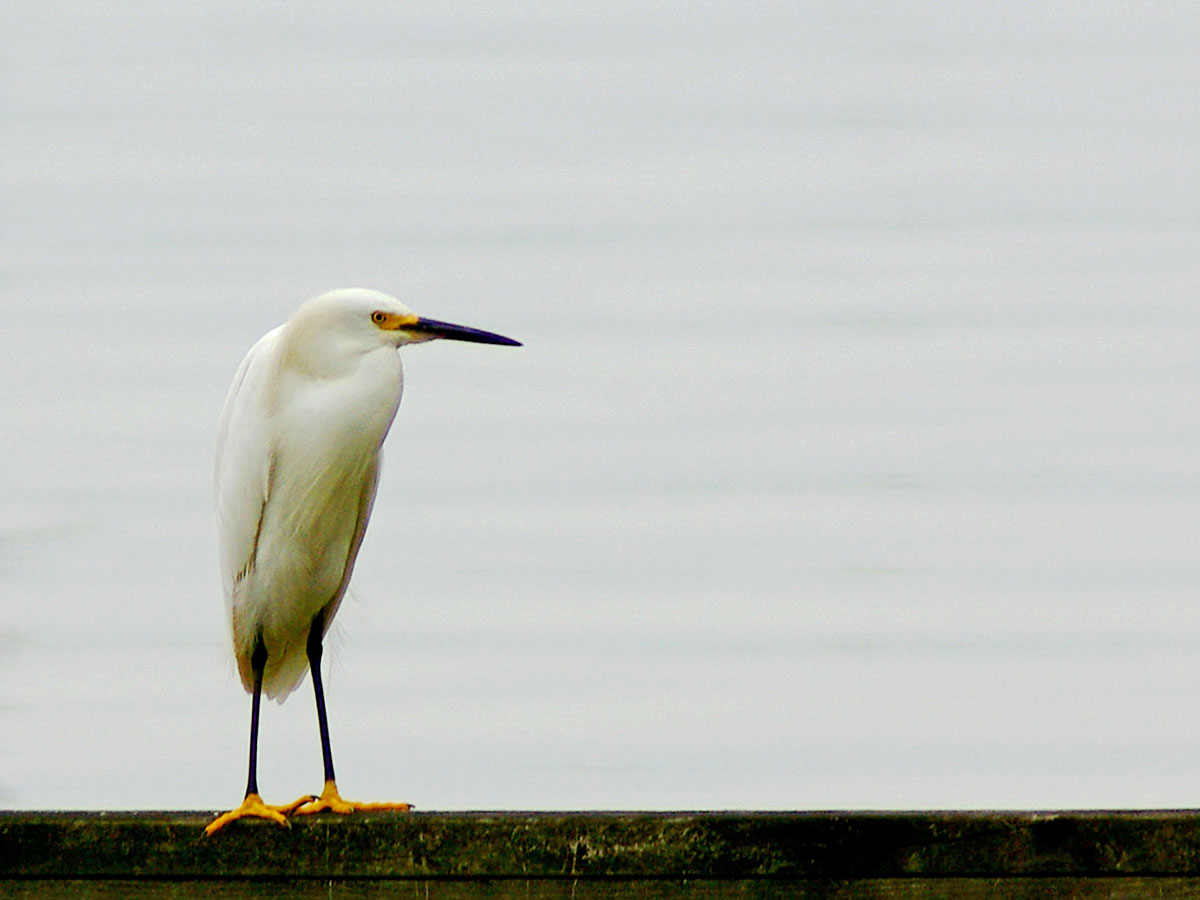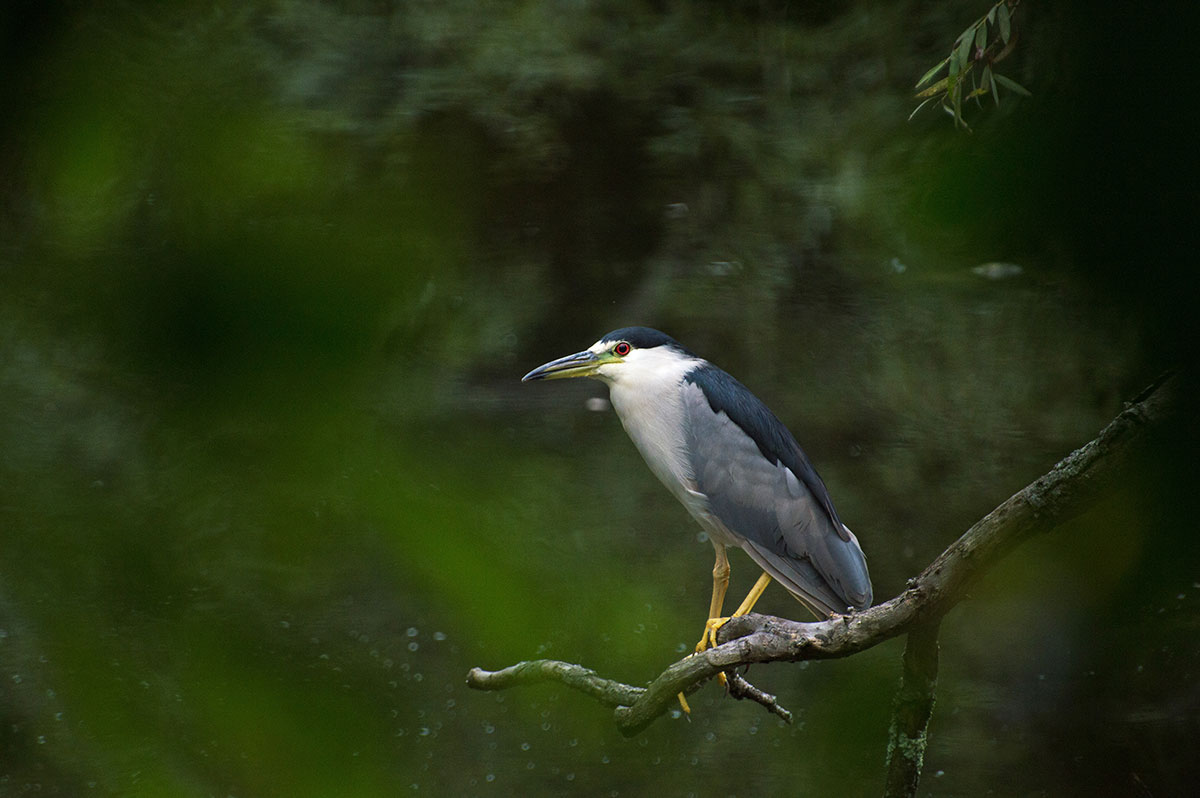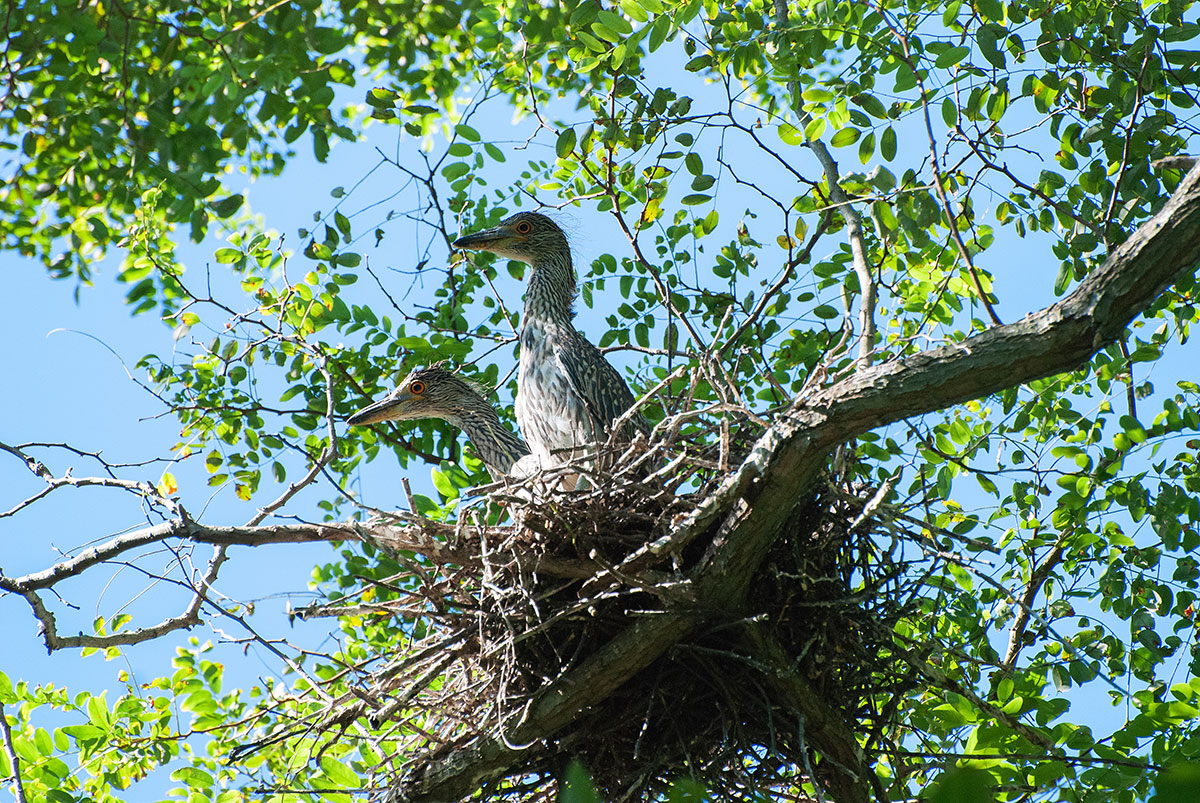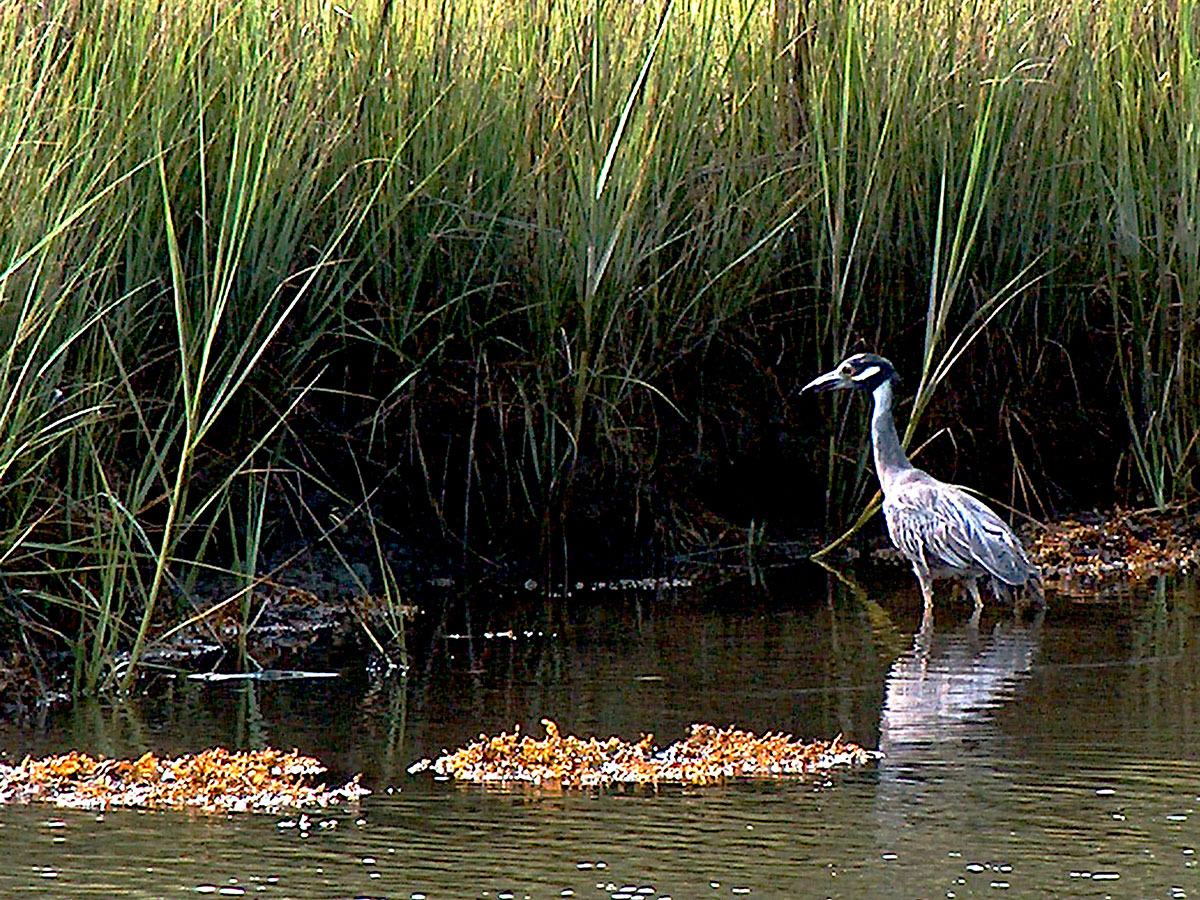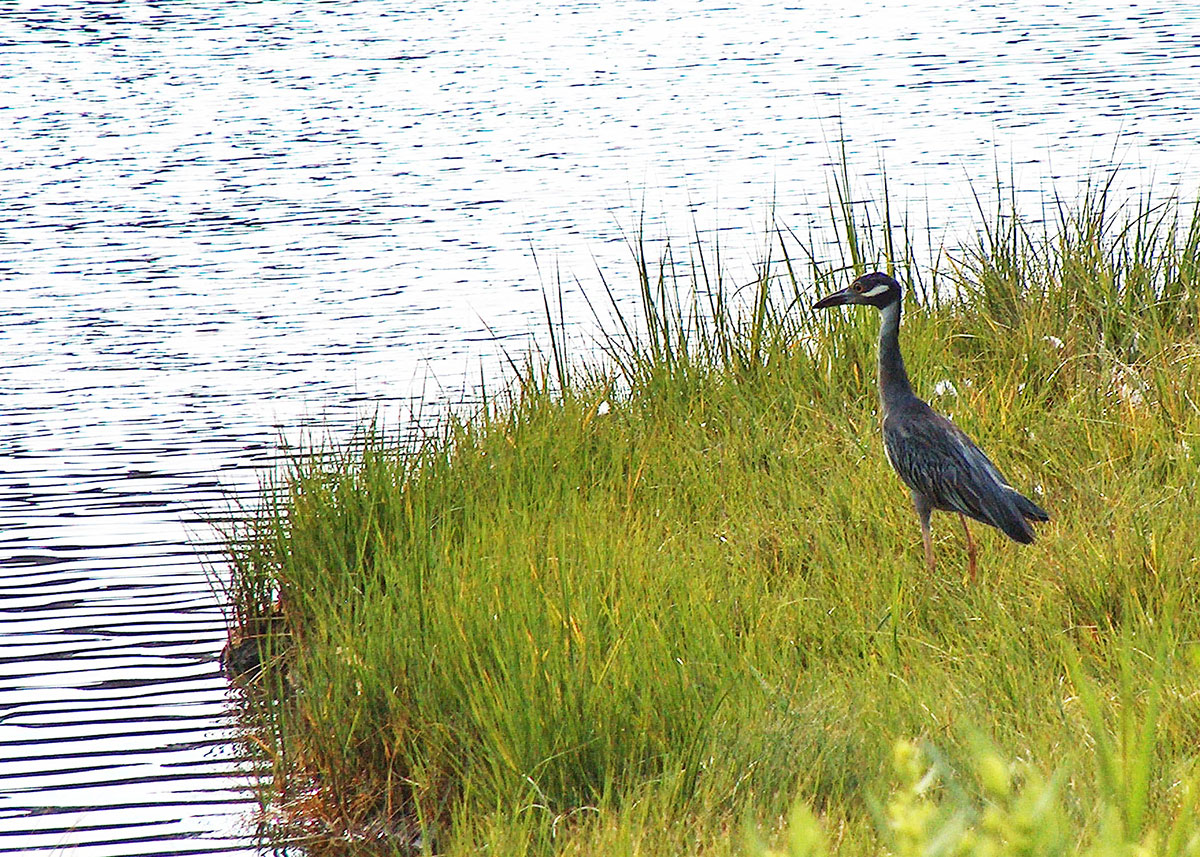ANNUAL EXHIBITION 2021
HERONS & EGRETS
Fishers Island is host to many bird species, but perhaps the most striking are the herons and egrets, members of the bird family Ardeidae.
Great Blue Heron
Photograph by Robert Burton, USFWS
“Anyone observing herons in flight will notice that they hold their necks in an ‘S’ shaped curve. This is due to the fact that their neck vertebrae are of differing lengths.”
Quote from “Herons and Egrets” by Penni Sharp, Nature Notes, HLFM Newsletter, 2012. (Note: This photograph was not taken on Fishers Island.)
Great Egret (Ardea alba)
Photograph by Todd McCormack
The all-white Great Egret has black legs and black feet, a detail that helps distinguish it from the Snowy Egret. The Great Egret can be seen in many locations on Fishers Island—in marshes, at the edge of ponds, in shallow coastline waters—standing motionless for what seems an eternity. Then suddenly, with a rapid-fire jab of the head, the Great Egret secures prey, often a crab or small fish, at the end of a very sharp and very long yellow bill.
Colony of Great Egrets, South Dumpling
Photograph by Todd McCormack
Like the Great Blue Heron, the Great Egret nests in colonies and prefers to locate their stick nests in trees. In past years, heron rookeries were located in various parts of Fishers Island, including the south side of Middle Farms Pond. Today, South Dumpling is the primary heron colony site.
Snowy Egret (Egretta thula)
Photograph by Timothy J. Hallett
The Snowy Egret, similar but quite a bit smaller than the Great Egret, is distinguished from the latter by its black bill, black legs and vibrant yellow feet. During breeding season, long delicate plumes extend down its back. These plumes brought the Snowy Egret and other herons to the brink of extinction in the late 19th century when they were sought by the millinery trade as adornment for women’s hats.
Black-crowned Night Heron (Nycticorax nycticorax), Duck Pond
Photograph by Connor Jones
One of two night herons that can be found on Fishers Island, the Black-crowned Night Heron is a medium sized stocky bird. The crown of its head and back are black, wings gray, and underparts white. As the name implies, the night herons are active at night, feeding mostly at dusk and after. However, they can also be seen during the daytime, frequently at Madeline Ave. Pond and sometimes at Silver Eel Cove and the Duck Pond.
Black-crowned Night Heron nest, the Peninsula, Darby’s Cove
Photograph by Terry McNamara
“[Black-Crowned Night Heron] Nest Description: The male starts building the nest, a platform of sticks, twigs, and other woody vegetation which he collects from the ground (or breaks right off the trees). Once he has found a mate, the male continues collecting material, but passes it to the female, who works it into the nest. Some nests are sturdy, while others are flimsy…” Quote from Cornell Lab of Ornithology’s website, allaboutbirds.org.
This nest appears to fall into the “flimsy” category.
Adult Green Heron (Butorides virescens)
Photograph by Justine Kibbe
The Green Herons are solitary, secretive and small for a heron (17 inches). They are often hard to spot, hunched over and half-hidden in vegetation at the edges of ponds, marshes, and small freshwater wetlands. They have a dark cap, a rufous-colored neck, a blue-green back, and bright orange legs. Their diet consists mostly of small fish, but they will also eat mollusks, crustaceans, reptiles, amphibians and insects.
The Green Heron is one of 12 tool-using bird species world-wide that is known to use bait to catch fish. Green Herons drop insects, feathers, and bread crusts (in places where people feed swans and ducks) to lure small fish. Of the 12 species, seven belong to the heron family.

